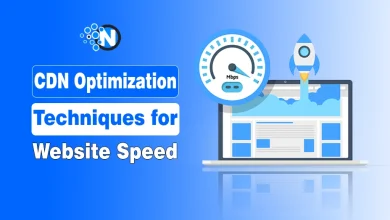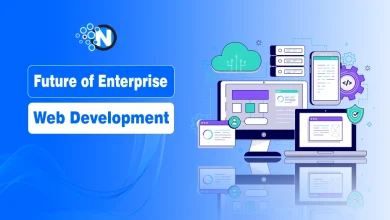JavaScript Full-Stack Development Process – Everything you Should Know

JavaScript is one of the most widely used programming languages. It is used for both the front and back ends of online applications.
In practical terms, programmers just need to learn one JavaScript language to handle everything from the user interface to server and database management.
There are several advantages to using custom JavaScript development services for both sides. By removing the need to transition between multiple programming languages, it streamlines the workflow and, for example, speeds up and improves the efficiency of the development process. But there are other advantages as well.
Let’s go trough together!
Front-End Development with JavaScript
Start creating Verdict in seconds, and convert more of your visitors into leads.
JavaScript front-end development requires some essential frameworks and technologies. A web page’s content is organized by HTML, styled by CSS, and interactive by JavaScript.
Popular frameworks powered by JavaScript, such as Vue, Angular, and React.Js, make it easier for developers to create advanced online apps. These frameworks provide pre-built parts and tools that speed up development and improve the structure of the code.
State management, event handling, and DOM manipulation are fundamental concepts in front-end JavaScript. Developers can effectively modify a web page’s content and structure through DOM modification. The application may react to user input, such as clicks and keyboard input, with event handling.
State management keeps the application’s data update and consistent. Tools like Webpack, Babel, and npm make code optimization and dependency management easier. Utility libraries and frameworks like Moment.js and Lodash bring helpful features for routine operations. Best practices for building user interfaces include designing responsive layouts and using a component-based architecture to promote code reuse and easy maintenance.

Back-End Development with JavaScript
Using server-side technology, back-end development with JavaScript includes creating the logic for the application and handling data. One prominent tool for this is Node.js, which facilitates the creation of scalable applications. Express.js is another essential technology that simplifies the setup of web servers and APIs. Other frameworks, such as Koa and Hapi, also provide strong functionality for back-end development.
RESTful APIs, asynchronous programming, and middleware are key ideas in back-end JavaScript. In an application, middleware manages requests and answers. With RESTful APIs, different systems can communicate online. Asynchronous programming, which uses Promises and Async/Await to improve performance, allows the software to handle multiple activities at once.
With databases like MongoDB, PostgreSQL, and MySQL, database integration is essential. Working with databases is made easier by ORMs like Sequelize and Mongoose. User authentication, authorization, and best practices for securing applications are the main topics of security and authentication.
Connecting the Front End with the Back End
For data to flow smoothly across an application, the front-end and back-end must be connected. A key part of this is API communication, which involves making HTTP requests with tools like Fetch API and Axios. These tools enable data transmission and reception from the back-end to the front-end. This data is frequently exchanged using JSON since it is an easy-to-use and efficient format. Proficiency in JSON is essential for effective API connectivity.
Data can be transferred and received instantaneously between the front-end and back-end with WebSockets’ real-time communication features. Socket.io is a well-known library that simplifies the use of WebSockets. For programs that require quick changes, such as chat systems and live notifications, real-time data is essential. These technologies support maintaining the responsiveness and user interactivity of a web application.
Development Workflow and Best Practices
Best practices and an efficient development workflow are necessary for ultimate project success. Version control is essential, and Git & GitHub are two solutions that make managing code changes and teamwork easier. Git commands like git init, git commit, and git push are essential for managing and distributing your work. By utilizing these resources, the team can make sure that all members can collaborate effectively and maintain project organization.
Testing and debugging are key to maintaining high-quality code. Front-end testing tools like as Jest and Enzyme aid in identifying problems with user interfaces, whereas back-end testing tools like Mocha and Chai are helpful. Debugging tools that help you detect and repair issues in your code include Node.js Debugger and Chrome DevTools.
Deployment and Continuous Integration/Continuous Deployment (CI/CD) are also important. Applications can be deployed more easily with platforms like Vercel, AWS, and Heroku. By ensuring that new code is automatically tested and deployed, CI/CD pipelines can streamline development and lower error rates.
Why JavaScript Full-Stack Development Is a Good Idea?
JavaScript full-stack development is a great option because of its unified language approach, which makes development more efficient. This reduces the difficulty of utilizing separate front-end and back-end languages.
The extensive ecosystem surrounding JavaScript, which includes frameworks like React and Node.js, improves scalability and productivity. Furthermore, JavaScript performs better since it is asynchronous and non-blocking, especially when performing input/output activities.
Full-stack JS development advantages include:
- Unified Language: Uses JavaScript for both client and server, reducing complexity.
- Access to robust frameworks and libraries like as Node.js, Express, React, and Vue is provided by the vast ecosystem.
- Asynchronous Processing: Makes use of non-blocking calls to improve performance, particularly for I/O activities.
- Scalability: Using technologies such as Node.js, applications may be easily scaled horizontally.
- Community Support: Consistent updates and strong community support.
- Reusable Code: Accelerate development by sharing code between front-end and back-end systems.
To Sum Up
Start creating Verdict in seconds, and convert more of your visitors into leads.
Building web applications with full-stack JavaScript development is a productive method. JavaScript reduces complexity and streamlines the workflow when it is used for both the front-end and back-end. A robust ecosystem for dynamic and scalable applications is produced by front-end technologies like React, Angular, and Vue.js working together with back-end technologies like Node.js and Express.js. Performance and maintenance are enhanced by this cohesive approach, which guarantees that the two components of the program function well together.
Best practices streamline the development process, such as implementing Continuous Integration/Continuous Deployment (CI/CD) pipelines, extensively testing and debugging, and using Git and GitHub for version control. Applications in the real world, such as social media platforms and e-commerce websites, demonstrate the value of full-stack JavaScript development. Building contemporary web apps is made easier with full-stack JavaScript’s consistent language, abundance of tools, and vibrant community.




